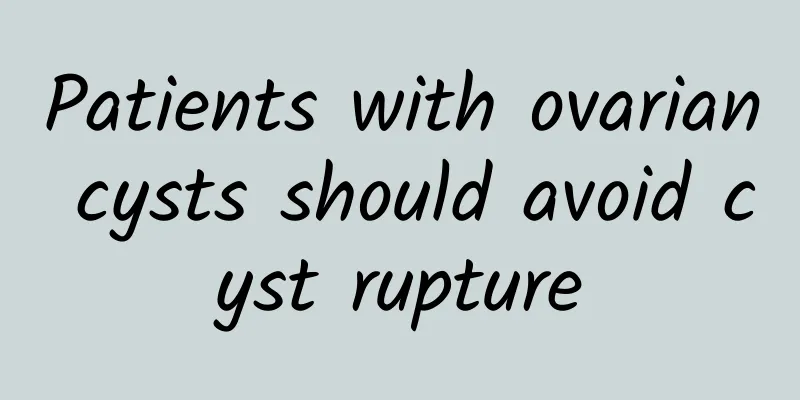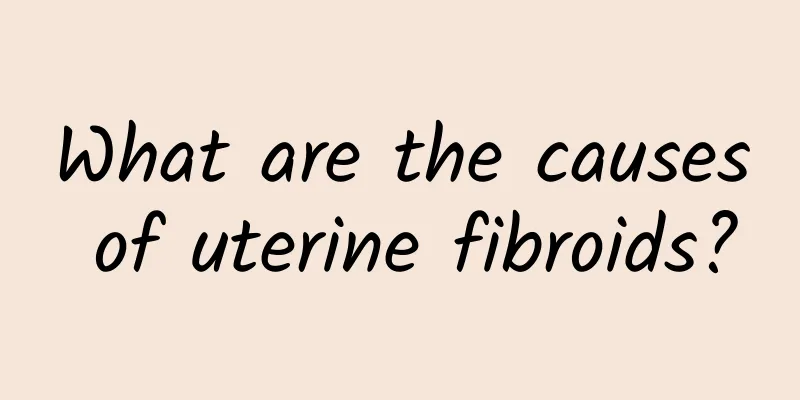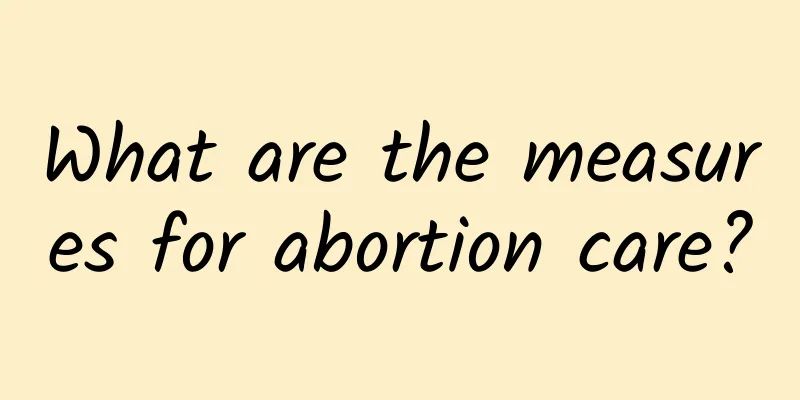Patients with ovarian cysts should avoid cyst rupture

|
The causes of ovarian cysts may be due to environmental factors, living habits, mental state, etc. It often occurs in women between the ages of 20 and 50. Women in this age group should go to the hospital for regular check-ups to detect ovarian cysts in time and treat them in time. Patients who already have ovarian cysts should avoid cyst rupture. Causes of ovarian cyst rupture The causes of ovarian cyst rupture are external force and spontaneous rupture of the ovary. 1. External force: Patients with ovarian cysts may cause cyst rupture if they lift heavy objects or have excessively strenuous sexual intercourse. Constipation increases the intra-abdominal pressure and can also cause cyst rupture. These are all external forces. 2. Spontaneous rupture of the ovary: Patients are infected with other diseases that cause ovarian congestion and lead to cyst rupture, such as uterine prolapse, pelvic inflammatory disease, appendicitis, etc. The use of drugs causes ovarian dysfunction, resulting in ovarian bleeding tendency or coagulation disorder, which can eventually lead to cyst rupture. Treatment of ruptured ovarian cyst When an ovarian cyst ruptures, the patient may experience severe pain in the lower abdomen, which gradually spreads to the entire abdomen. Ovarian cyst ruptures are more common in women of childbearing age, and most often occur during or before menstruation. Once the cyst ruptures, there may be bleeding and hypotension symptoms. Since a large amount of abdominal bleeding will cause adhesions and lead to infertility, timely treatment is required. If there is no hypotension, anemia, and hemoglobin concentration is less than 16%, no surgical treatment is required and intravenous drip treatment can be given. If the patient has hypotension or hemoglobin concentration is greater than 16%, surgical treatment should be considered. |
<<: Mechanism of dysfunctional uterine bleeding caused by sex hormone secretion disorder
>>: Precautions before treatment of pelvic inflammatory disease patients
Recommend
How long do people with Bartholinitis usually live?
How long can patients with Bartholinitis live? Ex...
TOP20 quick weight loss foods ranking! (Down)
TOP/11 Sweet potatoes Sweet potatoes are rich in ...
Hidden fat! The fattening devil in the tofu family is actually...
Have you eaten tofu today? More and more people p...
How much does it cost to treat endometrial thickening?
Many diseases not only affect patients physically...
What is the reason for a lot of farts after miscarriage?
Abortion refers to artificial abortion, and exces...
How many days do you need to rest after abortion?
After an abortion, most women need to rest for 1 ...
What is the main diagnosis for dysmenorrhea?
Dysmenorrhea is a common phenomenon in life, but ...
Let's briefly analyze the causes of irregular menstruation
Irregular menstruation is a gynecological disease...
What is the impact of threatened miscarriage on people?
It has become an indisputable fact that environme...
What tests should be done for abnormal leucorrhea
In women's lives, they may encounter abnormal...
What should I do if I always have headaches during menstruation?
What should I do if I always have headaches durin...
What are the symptoms of mixed vulvar leukoplakia?
It is very important for women to maintain good h...
The three main causes of ovarian cysts
What causes ovarian cysts? This is a question tha...
What are the symptoms of toxic heat type uterine fibroids? What are the treatments for uterine fibroids?
Regarding the symptoms of hot uterine fibroids, w...
Can you exercise while lying down? "Zero-position training" corrects atrophy and improves basal metabolism
Things to note for the "Zero Position Traini...









